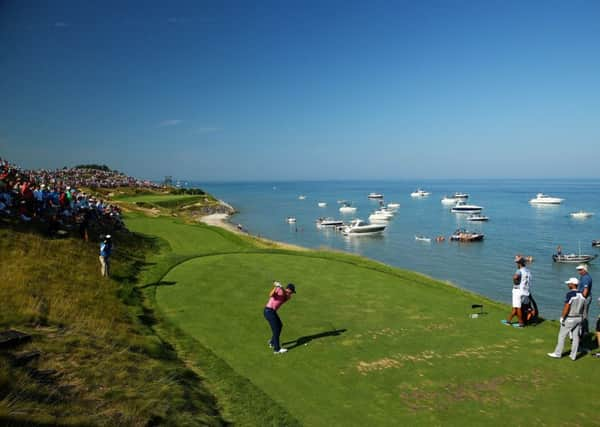Buggy ban for next year’s Ryder Cup at Whistling Straits


It’s not an ideal situation due to the important roles of the vice-captains, but buggies are not allowed at all during normal play and, in some respects, it will feel refreshing being at a big golf event for once next September and not actually get the impression you could be on the M8 due to the volume of carts buzzing about the place.
It took $2 million dollars and a Herculean effort – the site was pancake-flat farmland before becoming Camp Haven, a site used by the US Army as an anti-aircraft training facility in the 1950s – to build the course on a two-mile stretch alongside the shoreline, with 7,000 truckloads of sand being used to create a layout that is visually spectacular and a test for big boys with more than 500 bunkers and 14 water hazards.
Advertisement
Hide AdAdvertisement
Hide AdOn some of the holes alongside the lake, it feels a bit like being at Castle Stuart, though with not quite the same dramatic elevation as at the Inverness course. From a spectator point of view, meanwhile, it is set to be one of the toughest walks in the sport, as well a challenge to see the action at some points because, on no less than 10 holes, fans can only be on one side of the fairway.
That’s the downside of building a course next to a lake – it actually felt like looking out to the North Sea as a 40mph wind whipped off it under a leaden sky that was left behind following some Biblical-like rain on Tuesday night – but the upside is that some stunning holes, many of which have a risk and reward element, will be brilliant for a Ryder Cup with its match-play format.
Almost every hole is intimidating from the tee and a number of them play as doglegs, a double one in the case of the fifth, a 600-yard par 5 that probably felt as though it was closer to 800 yards into the teeth of that strong wind on Wednesday. It is easy to understand why Herb Kohler, the owner an executive chairman of Kohler Co., came up with the name as he walked the land during early construction of the golf course, where a flock of Scottish blackface sheep now roam as part of his desire to give it the feel of a links course in the country where he owns the Old Course Hotel, Hamilton Hall and The Duke’s Course in St Andrews.
In the past two matches in particular, the home team set up the course in a way that really suited them. Hazeltine, for instance, was a birdie-fest in 2016 that played into the hands of the big-hitters in particular in the US side, while an emphasis on straight-hitting at Le Golf National in 2016 helped Europe claim a seven-point win.
It’s difficult to see what Stricker can do to this course, though, that can help give his players any real edge, hence why Harrington seemed to leave this week’s “Year to Go” event here seeming to be quietly confident.